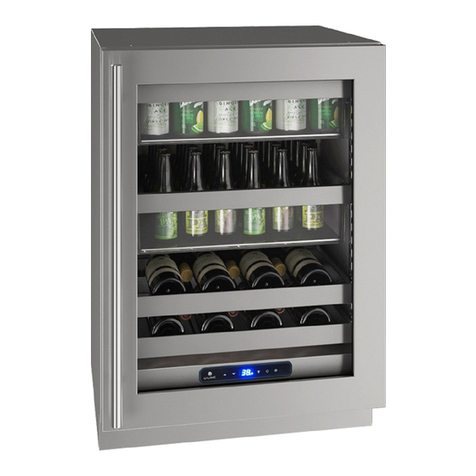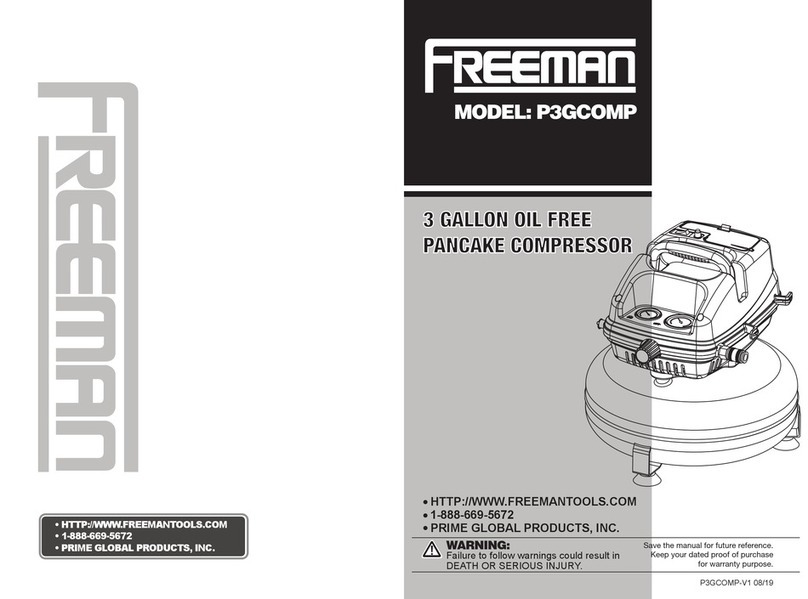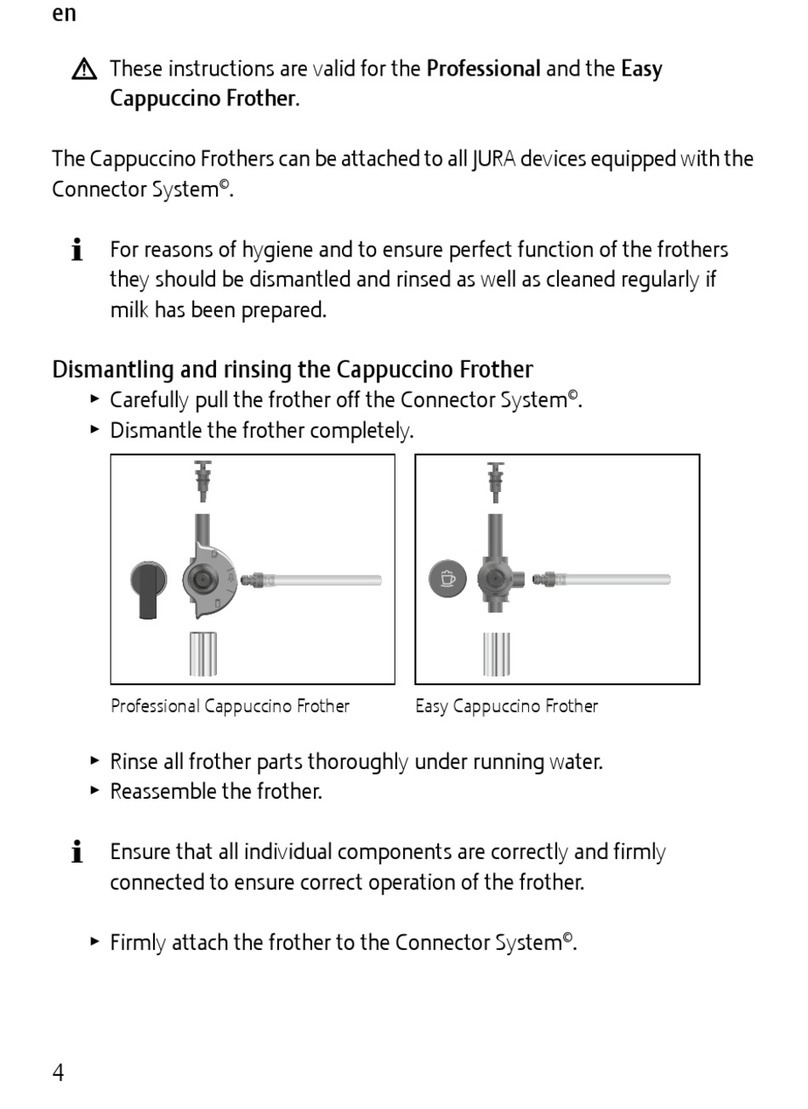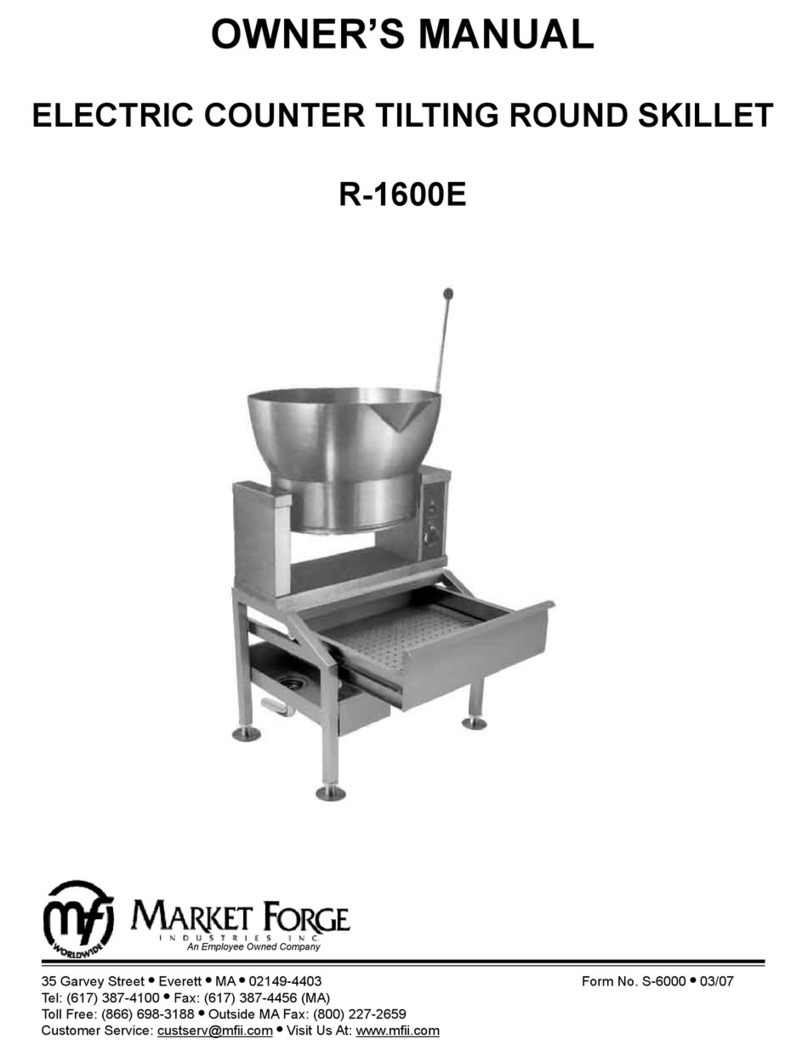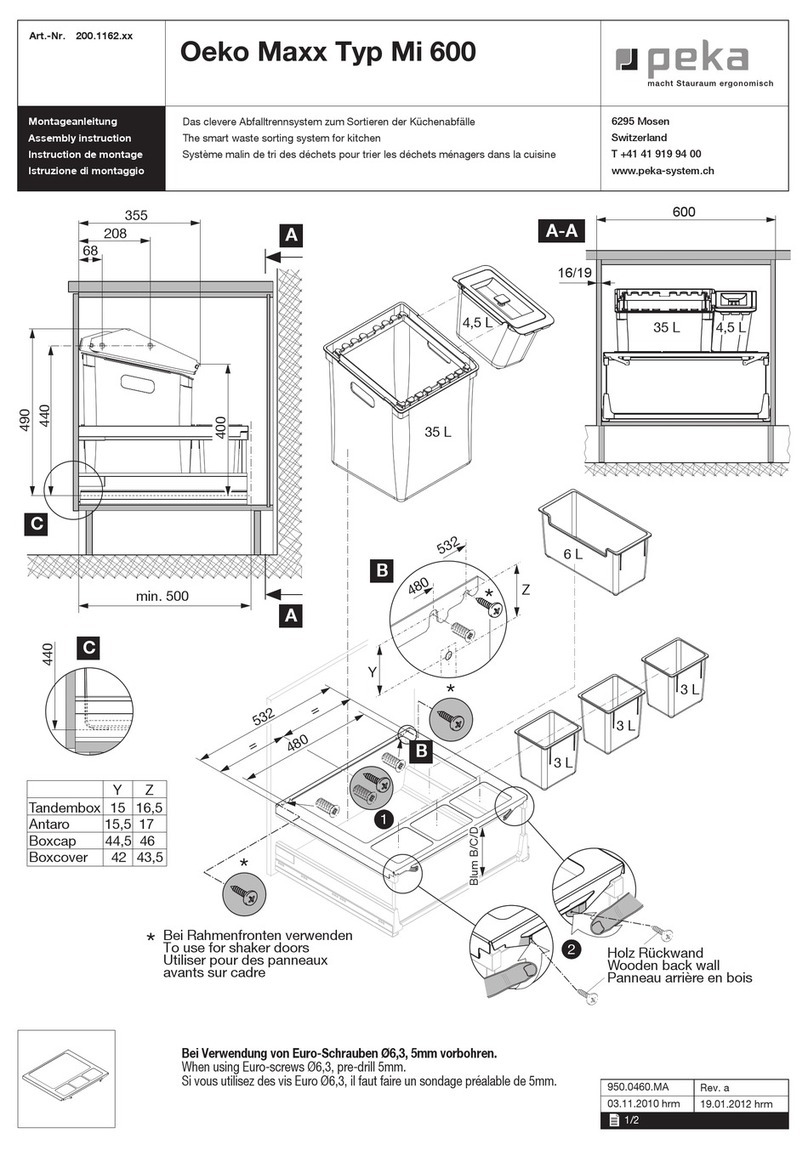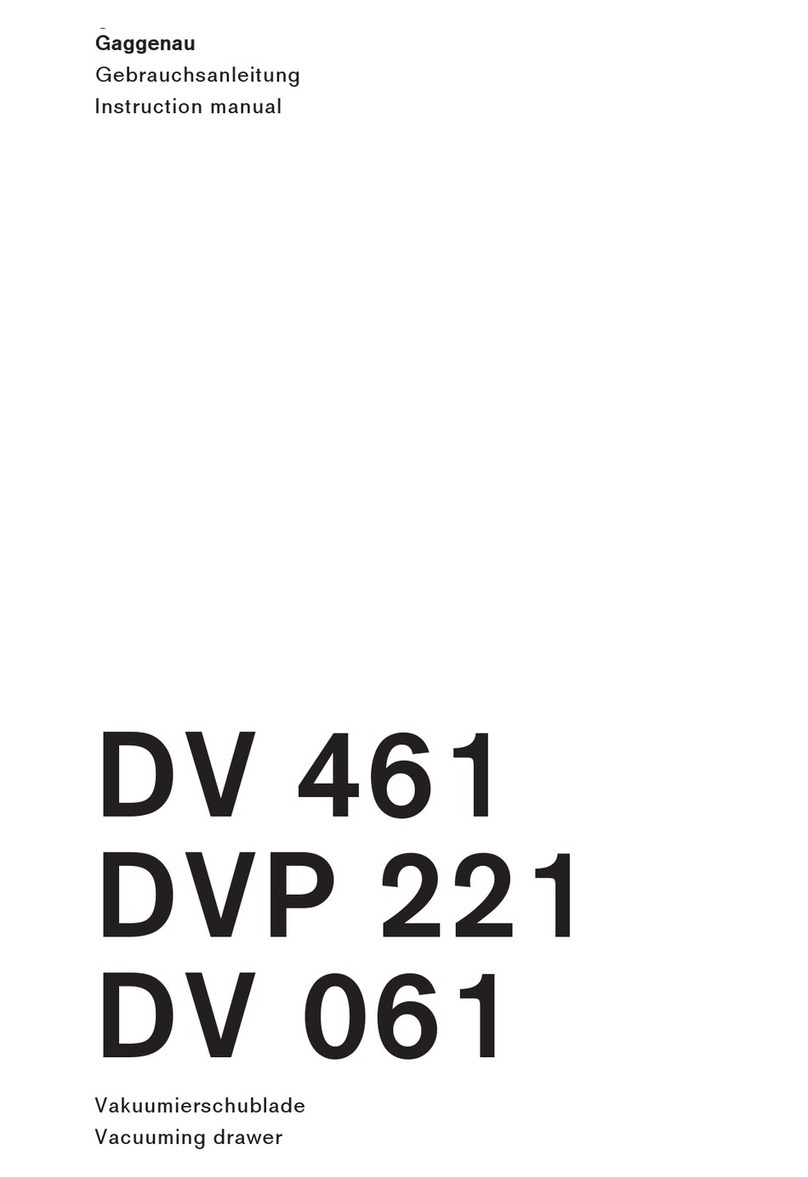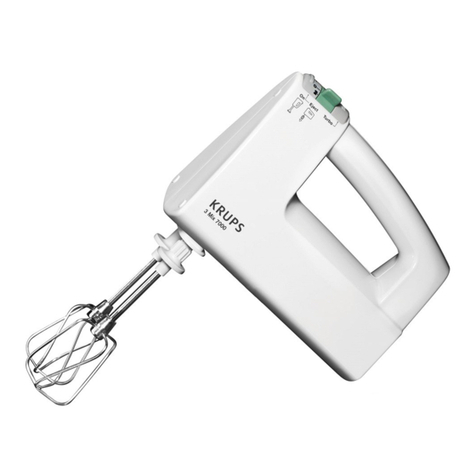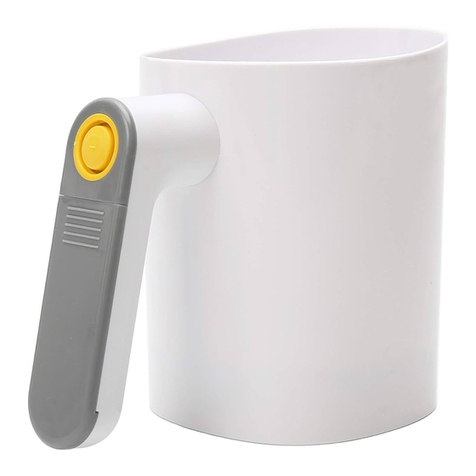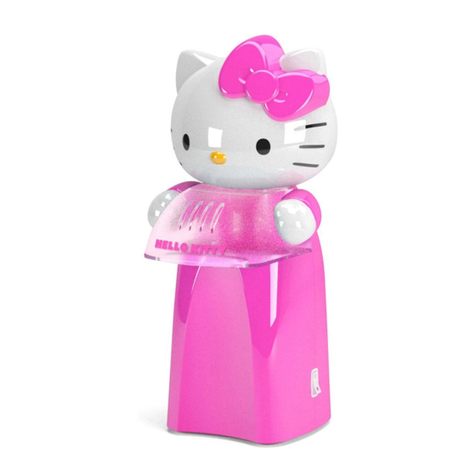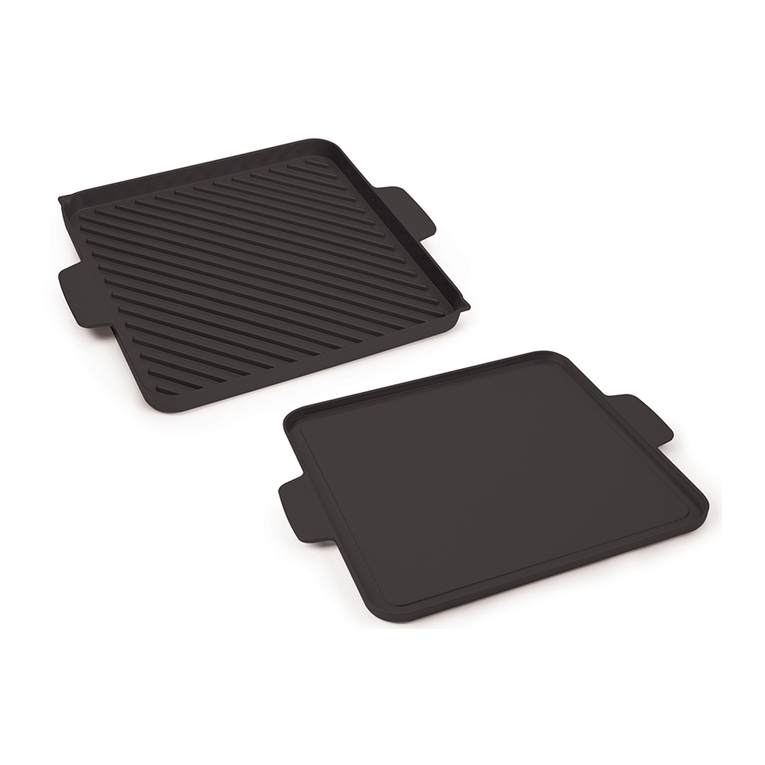Smad JC-46E User manual

WINE COOLER JC-46E
OPERATING
INSTRUCTIONS
Please read this manual carefully before using the wine cooler
(please read and save these instructions)
Dear customer
Before placing your new wine cooler into operation please read these operating instructions carefully. They contain
important information for safe use, for installation and for care of the appliance.
Please keep these operating instructions for future reference. Pass
them on to possible new owners of the appliance.
Notes which are important for your safety or for the proper functioning of the appliance are stressed with a warning
triangle with signal words(Warning!. Caution! Important!).Please observe the following carefully.
Supplementary information regarding operation and practical applications of the appliance appear after this symbol
Tips and notes concerning economical and environmentally sound use of the appliance are marked with the
cloverleaf.
The operating instructions contain instructions for the correction of possible malfunctions by the user in the section
〝Trouble shooting〞.If these instructions should not be sufficient, contact your local Service Force Centre.

2
Contents
Important Safety Instructions ——————————————————————2
Remove transport packaging ——————————————————————3
Installation —————————————————————————————4
Installation Location —————————————————————————4
Your wine cooler needs air ———————————————————————4
Description of the appliance ——————————————————————5
View of the appliance—————————————————————————5
Starting up and temperature regulation ——————————————————6
Interior Accessories —————————————————————————6
Storage shelves/wire trays— ——————————————————————7
Correct storage ———————————————————————————7
Defrosting —————————————————————————————7
The wine cooler defrosts automatically ——————————————————9
Switching off the appliance ——————————————————————7
Cleaning and Care ——————————————————————————7
Energy Saving Tips —————————————————————————8
Trouble shooting ————————————————————————— 8
Correcting Malfunctions ———————————————————————8
Changing the LED light ———————————————————————9
Power Supply————————————————————————————9
Technical specifications————————————————————————10
Wine cooler Circuit Diagram——————————————————————10

3
Important Safety Instructions
These warnings are provided in the interests of your safety. Ensure you fully understand them before installing or
using the appliance.
Your safety is paramount importance. If you are unsure about the meaning of these warnings, please contact the
Customer Care Department for assistance.
Intended use
·The wine cooler is intended for use at home. It is suitable for the storing of food at low temperature. If the
appliance is used for purposes other than those intended or used incorrectly, no liability can be accepted by the
manufacturer for any damage that may be caused.
·Alterations or changes to the wine cooler are not permitted for reasons of safety.
If you use the wine cooler in a commercial application or for purposes other than the cooling of foods, the
manufacturer accepts no liability for any damages which may occurs.
Prior to initial start-up
·Check the appliance for transport damage. Under no circumstance should a damaged appliance be plugged in. In
the event of damage, please contact your supplier.
Wine cooler
The wine cooler is butane (R600a) is contained within the wine cooler circuit of the appliance, a natural gas with a
high level of environmental compatibility, which is nevertheless flammable
·During transportation and installation of the appliance, be certain that none of the components of the wine cooler
circuit become damaged.
·If the wine cooler circuit should become damaged: avoid opening flames and sources of ignition;
thoroughly ventilate the room in which the appliance is situated.
·It is intended to be used exclusively for the storage of wine.
·This refrigerating appliances is not intended to be used as a built -in appliance.
. This refrigerating appliance is not suitable for freezing foodstuffs.
·The Wine Cooler is recommended to be designed at 12°C.
·The shelves are placed in factory mode that results in the most efficient use of energy for the refrigerating
appliances.
·Note: Setting the temperature too high can cause the wine to spoil, and setting the temperature too low can waste
electricity.
Safety of children
·Packaging (e.g. wraps, polystyrene) can be dangerous for children. There is a risk of suffocation! Keep packaging
material away from children!
·Make old appliances unusable prior to disposal. Pull out the main plug, cut off the mains cable, break or remove
spring or bolt catches, if fitted. By doing this you ensure that children cannot lock themselves in the appliance

4
when playing (there is risk of suffocation!) or get themselves into other dangerous situations.
·Often children cannot recognize the hazards present in household appliances. It is therefore important that you
ensure adequate supervision and never let children play with the appliance!
Daily Operation
·Containers with flammable gases or liquids can leak at low temperatures. There is a risk of an explosion! Do not
store any containers with flammable materials such as spray cans, fire extinguisher refill cartridges etc in the wine
cooler.
·Do not operate any electrical appliances in the wine cooler (e.g. electric ice cream makers, mixers etc.).
·Before cleaning the appliance, always switch off the appliance and unplug it, or pull the house fuse or switch off
the circuit breaker.
·When unplugging always pull the plug from the mains socket, do not pull on the cable.
In case of malfunction
If a malfunction occurs on the appliance, please look first in the “Trouble shooting” section of these instructions.
If the information given there does not help, please do not perform any further repairs yourself.
·Under no circumstance should you attempt to repair the appliance yourself. Repairs carried out by inexperienced
persons may cause injury or serious malfunctioning. Contact your local Service Force Centre.
Remove transport packaging
The appliance and the interior fittings are protected for transport. Pull off the adhesive tape on the left and
right side of the door. You can remove any remnants of adhesive using white spirit. Remove all adhesive tape
and packing pieces from the interior of the Appliance.
Installation
Installation Location
The appliance should be set up in a well-ventilated, dry room. Energy use and efficient performance of the
appliance is affected by the ambient temperature. The appliance should therefore not be exposed to direct sunlight;
not be installed next to radiators, cookers or other sources of heat; only be installed at a location whose ambient
temperature corresponds to the climate classification, for which the appliance is designed. The climate classification
can be found on the serial plate, which is located at the left on the inside of the appliance. The appliance must be
positioned so that the plug is accessible. The following table shows which ambient temperature is correct for each
climate classification:
If the wine cooler is installed next to another refrigerator or freezer a clearance of 5 cm at the sides is required,
in order to prevent the formation of condensation on the outside of the appliance.
Your refrigerator needs air
For correct operation, this appliance must be located in a dry atmosphere, away from heat sources, e.g. cookers,
radiators, boilers and direct sunlight.
You should also ensure that air can circulate freely around the back and the top of the cabinet. ST
Left and right: 150mm
Back: 100mm

5
TOP: 100mm
Description of the appliance
View of the appliance
Mode: JC-46E
1Body of Wine cooler
②Wire Shelf
③Adjustable Leg
④Door Gasket
⑤Display Board
⑥Black Glass Door
1
5
2
4
6
3

6
Starting up and temperature regulation
When the power is connected, the cooling system starts to work. The temperature is adjusted in the range of
5℃—18℃ in the cabinet.
When you press the display control unit’s button, The LED display number gradually diminish, last to
“5℃”or “6℃” ;When you press the display control unit’s button, The LED display number gradually
larger last to “18℃”;You can set on certain position, Which means that if the temperature in the wine-cooler reach
the point set, self-control temperature system stops cooling system so the temperature in the cabinet rises gradually.
when the inside temperature rises above the set point, Cooling self-control temperature starts to work again.
You can press the and button to unlock the product. If you press the button , the
display can change from Celsius( ℃) to Fahrenheit (℉).You can press the button , then the lamp can
change from lighten to go out.
Important!
High ambient temperatures (e.g. on hot summer days) and a cold setting on the temperature to “5℃”or “6℃”
can cause the compressor to run continuously.
Reason: when the ambient temperature is high, the compressor must run continuously to maintain the low
temperature in the appliance.
The wine cooler will not be able to defrost since automatic defrosting of the wine cooler is only possible when
the compressor is not running (see also “Defrosting” section). The result is the building up of a thick layer of frost
on the wine cooler rear wall. If this happens, turn the temperature regulator back to a warmer setting “5℃”or
“6℃” . At this setting the compressor will be switched on and off as usual and automatic defrosting recommenced.
Interior accessories
Storage shelves/wire tray
Various glass or plastic storage shelves and wire trays are included with your appliance. Different models have
different combinations. You should always slide one of the full size glass storage shelves into the lowest set of
guides, above the fruit and vegetable containers, and keep it in this position.
The height of the storage shelves can be adjusted: To do this pull the storage shelf forward until it can be swiveled
upwards or downwards and removed.
Please do the same in reverse to insert the shelf at a different height.
Correct storage
Tip: Food in the wine cooler should always be covered or packaged, to prevent drying and tainting of other
food.

7
The following are suited for packaging:
Polyethylene airtight bags and wraps;
Plastic containers with lids;
Special plastic cover with elastic;
aluminum foil.
Defrosting
The Wine Cooler defrosts automatically
The rear wall of the Wine Cooler covers with frost when the compressor is running, and defrosts when the
compressor is off. The water from the thawing frost evaporates by itself.
Switching off the appliance
To switch off the appliance, turn the temperature regulator to position“0”.
If the appliance is not going to be used for an extended period:
Remove all refrigerated packages.
Switch off the appliance by turning the temperature regulator to position“0”.
Remove the mains plug or switch off or disconnect the electricity supply.
Clean thoroughly (see section: leaning and Care)
Leave the door open to avoid the building up of odors.
Cleaning and Care
For hygienic reasons the appliance interior, including interior accessories, should be cleaned regularly.
Warning!
The appliance may not be connected to the mains during cleaning. Danger of electrical shock! Before
cleaning switch the appliance off and remove the plug from the mains, or switch off or turn out the circuit breaker
or fuse.
If the appliance is not in use forever, do not throw it away freely, send it to recycle bin for disposal. Never
clean the appliance with a steam cleaner. Moisture could accumulate in electrical components, danger of electrical
shock! Hot vapors can lead to the damage of plastic parts. The appliance must be dry before it is placed back into
service.
Important!
Ethereal oils and organic solvents can attack plastic parts, e.g. lemon juice or the juice from orange peel; butyric
acid; cleanser which contain acetic acid.
Do not allow such substances to come into contact with appliance parts.
Do not use any abrasive cleansers.
Remove the food from the wine cooler. Store it in a cool place, well covered.
Switch the appliance off and remove the plug from the mains, or switch off or turn out the circuit breaker or fuse.

8
Clean the appliance and the interior accessories with a cloth and lukewarm water. Commercially available dish
washing detergents may also be used.
After cleaning wipe with fresh water and rub dry.
Accumulation of dust at the condenser increases energy consumption.
For this reason carefully clean the condenser at the back of the appliance once a year with a soft brush or a vacuum
cleaner. Check the water drain hole on the rear wall of the wine cooler.
Clear a blocked drain hole with the aid of the green peg in the pack of accessories included with the appliance.
After everything is dry place appliance back into service.
Energy Saving tips
Do not install the appliance near cookers, radiators or other sources of warmth. High ambient temperatures cause
longer, more frequent operation of the compressor.
Ensure sufficient air circulation and exhaust at the appliance base and at the back wall of the appliance. Never cover
air vent openings.
Do not place warm foods into the appliance. Allow warm foods to cool first.
Only leave door open as long as necessary.
Do not set temperature any colder than necessary.
Keep the heat emitting condenser, the metal grille on the rear wall of your appliance, always clean.
Trouble shooting
Correcting Malfunctions
Spare parts:
The following spare parts can be ordered from your local Service Force Centre. You can fit these problems yourself
without any special skill or training, e.g.: butter/cheese compartment, egg holders, door racks, fruit and vegetable
drawers, storage racks
A malfunction may be caused by only a minor fault that you can rectify yourself using the following instructions.
Do not perform any other work on the appliance if the following information does not provide assistance in your
specific case.
Important! Repairs to wine cooler may only be performed by competent service engineers. Improper repairs can
give rise to significant hazards for the user. If your appliance needs repairing, please contact your specialist dealer
or your local Service Force Centre.
①When the wine cooler does not work.
Check if there is a power failure.
Check if the power plug is plugged into the power outlet.
Check that the fuse has not blown.
②When the wine cooler is cooling excessively.
The temperature control dial may be set too high.
If you place foodstuffs containing a lot of moisture directly under the cool air outlets, they will freeze easily. This

9
does not indicate a malfunction
③When the wine cooler is not cooling sufficiently.
The food may be packed too tightly together which will block the flow of cool air.
You may have put something hot or a lot of foodstuffs into the wine cooler.
The door may not have been closed properly.
The wine cooler may not be ventilated.
There may be insufficient clearance between the refrigerator and the surfaces immediately both sides and above.
The temperature control dial may not be set properly.
④When the defrosting water overflows inside the wine cooler and onto the floor.
check that the drain pipe and the drain hose are not clogged.
check that the drain pan is housed properly.
⑤When the wine cooler’s cabinet front heats up.
in order to safeguard against condensation, there is an anti condensation, pipe which heats up the cabinet front
when running actuated. A war cabinet front does not indicate a malfunction.
⑥When condensation form on the outside of the wine cooler.
condensation may form on the outside when the humidity is high such as during a wet season. This is the same
result as the condensation formed when chilled water is poured into a glass. It does not, therefore, indicate a
failure, wipe dry with a dry cloth.
⑦When you hear a sound like water flowing.
A sound like water flowing is the wine cooler flowing. It does not indicate a malfunction.
⑧When the cabinet’s side panel heats up.
The side panel of the cabinet will heat up when the door is opened or closed frequently.
when starting the unit and when the unit operates in summer with high ambient outside temperature. In such case,
do not touch the panel, it results from the dissipation of the heat from inside the cabinet, and it does not mean
that something is wrong with the wine cooler.
Changing the LED light
Warning!
There is a risk of electric shocks! Before changing the light bulb, switch off the appliance and unplug it, or
pull the fuse or the circuit breaker.
LED Light Board data: AC220~240 V, max. 1W;
To switch off the appliance;
Unplug the mains plug.
Undo the screw.
Put down the LED Light Board cover .
Change the defective light bulb.
Refit the LED Light Board cover and the screw.
Put the wine cooler back into operation.
Power Supply
The wine cooler is only applied with power supply of single phase alternating current of AC220-240Ⅴ ~
50Hz. lf fluctuation of voltage in the district user is of so large that the voltage exceeds the above scope, for safety
sake, be sure to apply A.C. automatic voltage regulator to the wine cooler. The wine cooler must employ a special
power socket instead of common one with other electric appliances. Its plug must match the socket with ground
wire.
Caution: do not use extension cord.

10
Power Line Cord
The cord should be neither lengthened nor folded into coil during operation. Moreover, it is forbidden that cord is
kept close onto the compressor at the back of the wine cooler, the surface temperature of which is quite high when
operating. Touching with it would deactivate the insulation or cause leakage for electricity.
Moving
When fixed or moved, the refrigerator cannot be set horizontally or declined to more than 45°or upside-down.
Technical specifications
Main technique data:
Model
Rated
Voltage
(V)
Rated
Frequ
ency
(Hz)
Rated
Input
Power
(W)
Current
(A)
Noise
dB(A)
Protective
Classification Of
Electric
Shook
Resistance
Size
(W*D*H)
Total
Capacity
refrigerant
Climate
Category
JC-46E
AC220-
240V~
50Hz
85W
0.5
39
I
430*480*510
46L
R600a
N,SN
Specifications are subject to change without prior notice.
If the technical specifications are different from the plate at back of the wine cooler, please refer to
the plate.
Wine cooler Circuit Diagram

11
Warning; Risk of fire / flammable materials
WARNING: When positioning the appliance, ensure the supply cord is not trapped or damaged.
WARNING: Do not locate multiple portable socket-outlets or portable power supplies at the rear of the appliance.
Children aged from 3 to 8 years are allowed to load and unload refrigerating appliances
The instructions shall contain details on the use of the appliance to ensure the safe preservation of foodstuffs.
To avoid contamination of food, please respect the following instructions
Opening the door for long periods can cause a significant increase of the temperature in the compartments of the
appliance.
If the refrigerating appliance is left empty for long periods, switch off, defrost, clean, dry, and leave the door
open to prevent mould developing within the appliance.
RECOMMENDED TEMPERATURE SETTINGS
The chart indicates the ideal storage temperatures for different types of wine:
Red Wines
15.5-18℃
Dry/White Wines
10-15℃
Sparkling Wines/champagne
7.2-9.5℃
Rose Wines
9.5-10.5℃
Vintage wine
13℃

12
ENVIRONMENT-FRIENDLY DISPOSAL
The symbol above and on the product means that the product is classed as Electrical or Electronic Equipment and
should not be disposed of with household or commercial waste at the end of its useful life. The Waste of Electrical
and Electronic Equipment (WEEE) Directive (2012/19/EU) was put in place to ensure that products are recycled
using the best available recovery and recycling techniques, minimizing the impact on the environment, treating any
hazardous substances and avoiding the proliferation of landfill. Contact local authorities for information on correct
disposal of Electrical or Electronic Equipment.
Table of contents
Other Smad Kitchen Appliance manuals
Popular Kitchen Appliance manuals by other brands

Goldair
Goldair GSR100 operating instructions
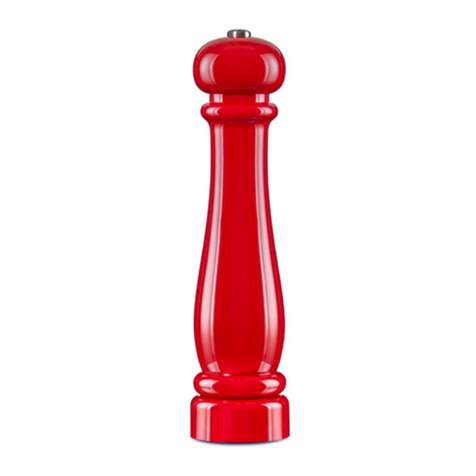
Dash
Dash DESM01 quick start guide

EdgeStar
EdgeStar CWR1662SZ owner's manual
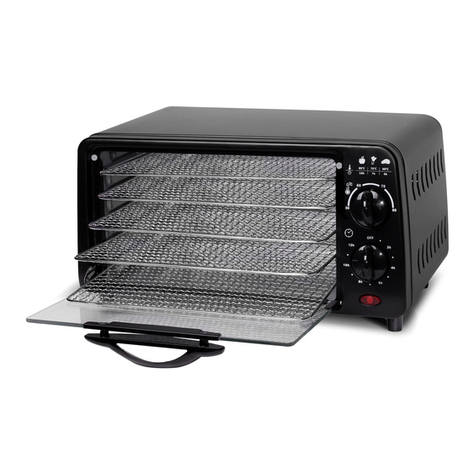
TurboTronic
TurboTronic TURBOWAVEbio TT-FD9 instruction manual
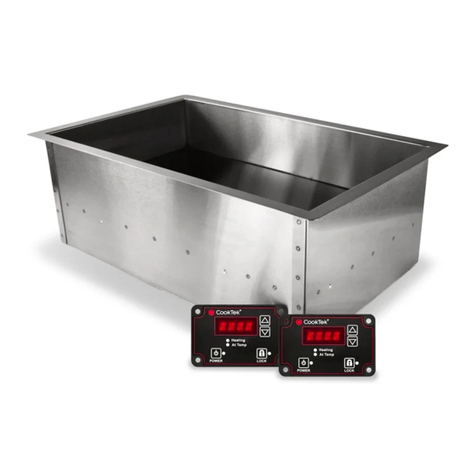
CookTek
CookTek SinAqua IHW061-22 Installation, operation and owner's manual
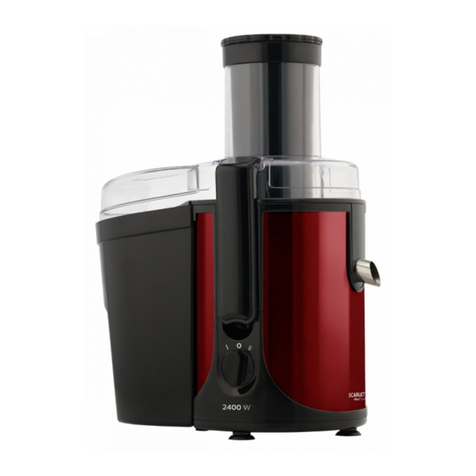
Scarlett
Scarlett SC-JE50S48 instruction manual

